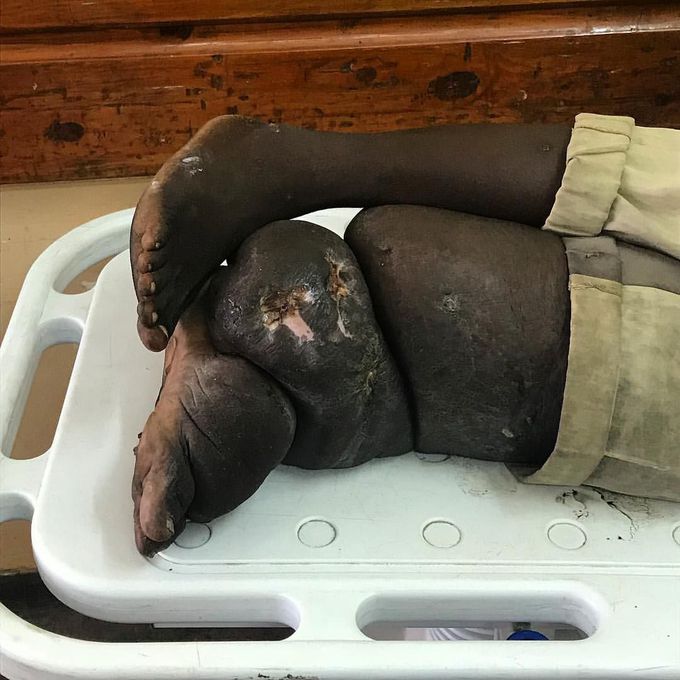


Elephantiasis in a young boy from Kenya!!
This pediatric patient was diagnosed with filariasis when his left lower limb appeared severely enlarged and swollen compared to the right leg. Filariasis is a parasitic and infectious tropical disease caused by thread-like parasitic filarial worms called nematodes. The infection occurs when an infected mosquito bites an individual introducing the larvae into the skin. These larvae then spread to various sites such as lymphatic vessels, subcutaneous tissues or serous cavities, where they mature to be adult filariae, then adult worms which produce microfilariae which are carried by another mosquito and the cycle continues. In lymphatic filariasis, repeated episodes of inflammation and lymphedema lead to lymphatic damage, chronic swelling (especially scrotal), and elephantiasis of the legs. Patients present with filarial fever which is self-limited fever. Diagnosis is made by identifying microfilariae on a giemsa stained thick blood film. Blood must be drawn at night, since the microfilaria circulate at night. The condition carries good prognosis in early cases but the chronic cases may progress to disability. The recommended treatment for patients with filariasis is albendazole combined with ivermectin. Photo by @bella_hope97
Hemodynamic stimuli&nonhemodynamic stimuliLymphatic Filariasis - (Elephantiasis)Effects of sugar on teeth



